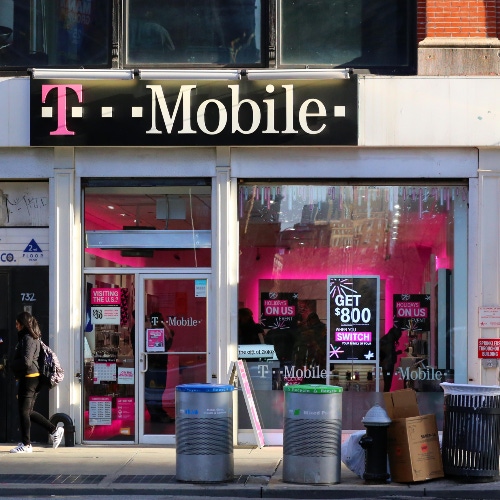Fresh data from Opensignal reaffirms that T-Mobile's fixed wireless subs skew rural, but also that those customers are highly concentrated in zip codes where the mobile network has low or limited congestion.

In addition to reaffirming that T-Mobile's fixed wireless access (FWA) subscribers continue to skew rural, new data from Opensignal also found that the vast majority of those customers are concentrated in areas with little to no mobile network congestion.
About 96% of T-Mobile's FWA subs reside in zip codes with "low or limited congestion," and just 4% of customers are in zip codes that are "heavily loaded," MoffettNathanson (a unit of SVB Securities) noted in its analysis (registration required) of fresh granular network data culled and analyzed by Opensignal.
Figure 1:  Click here for a larger version of this image.
Click here for a larger version of this image.
Those general findings match up quite well with a similar, prior analysis based on info from Comlinkdata (Comlinkdata acquired Opensignal in 2021) reported on roughly a year ago.
"It was clear then – and it remains clear now – that T-Mobile is being very careful to only take subscribers where their network can handle them," MoffettNathanson analyst Craig Moffett noted in the report.
What's not as clear is what the issue is in areas where there is congestion, whether it's due to overuse or because T-Mobile has yet to deploy its full complement of 2.5GHz midband spectrum, Moffett added.
But those pieces of the FWA puzzle are important. "Capacity remains the central debate with respect to FWA, both for investors in T-Mobile (and Verizon) who are attempting to estimate longer term revenue potential, and for investors in competing fixed line broadband services who are attempting to assess competitive risks," the analyst explained.
From a broad level, Opensignal's study of data obtained in the fourth quarter of 2022 did not find many signs of network congestion. The share of T-Mobile network tests with download speeds of less than 1.5 Mbit/s was just 1.3% in both Q4 2022 and Q2 2022.
Opensignal's latest data, Moffett said, is an "affirmation that T-Mobile is doing a sensible job of network management" by focusing on areas where it has capacity to accommodate FWA subs. But it also speaks to the capacity questions swirling about FWA. "T-Mobile is clearly aware of the issue and is managing appropriately around it," Moffett wrote.
Meanwhile, T-Mobile continues to expand the reach of its FWA service. It's currently available to more than 50 million households, up from about 30 million roughly a year ago. T-Mobile added 524,000 FWA subs in Q4 2022, down from 578,000 in the prior quarter, for a total of 2.64 million.
Reason for subscriber deceleration remains murky
Moffett points out that T-Mobile's subscriber deceleration arrives despite the increased availability of FWA services, but holds that the reason remains unclear.
He believes churn, in the wake of some anecdotal reports on service consistency, is certainly playing a role. Notably, Moffett points out that T-Mobile's FWA FAQ has adjusted the service's typical download speeds from a range of 35 Mbit/s to 115 Mbit/s to a range of 33 Mbit/s to 182 Mbit/s since the initial report. However, the range for upstream – 6 Mbit/s to 23 Mbit/s – is unchanged.
Moffett also surmises that the anticipated growth in gross additions "may not be materializing, or at least not to the extent that one might have expected." But he isn't sure if this is due to capacity constraints that limit the number of homes T-Mobile is willing to take on for FWA, or if there's a "run-off of initial pent-up demand."
But any recent deceleration hasn't altered T-Mobile's current forecast of having between 7 million to 8 million FWA subs by 2025. Moffett said that suggests a run-rate of roughly 500,000 subs per quarter.
The competitive picture
Opensignal's latest data also found that T-Mobile's FWA service faces stiff competition in most markets. About 45.9% of T-Mobile's FWA footprint faces off against both fiber-to-the-premises (FTTP) and cable competition, 43.2% against cable without FTTP and 7.7% against FTTP-only. Just 3.2% of T-Mobile's FWA service areas don't compete against cable or FTTP, the data found.
Notably, penetration of T-Mobile's service has increased the most in areas with markets with the least amount of "robust" competition, Moffett noted.
By way of example, T-Mobile's FWA service in Q4 2022 achieved penetration of 2.95% in areas with DSL and no cable, compared to 1.23% in areas with FTTP and cable competition.
Related posts:
— Jeff Baumgartner, Senior Editor, Light Reading
About the Author(s)
You May Also Like











